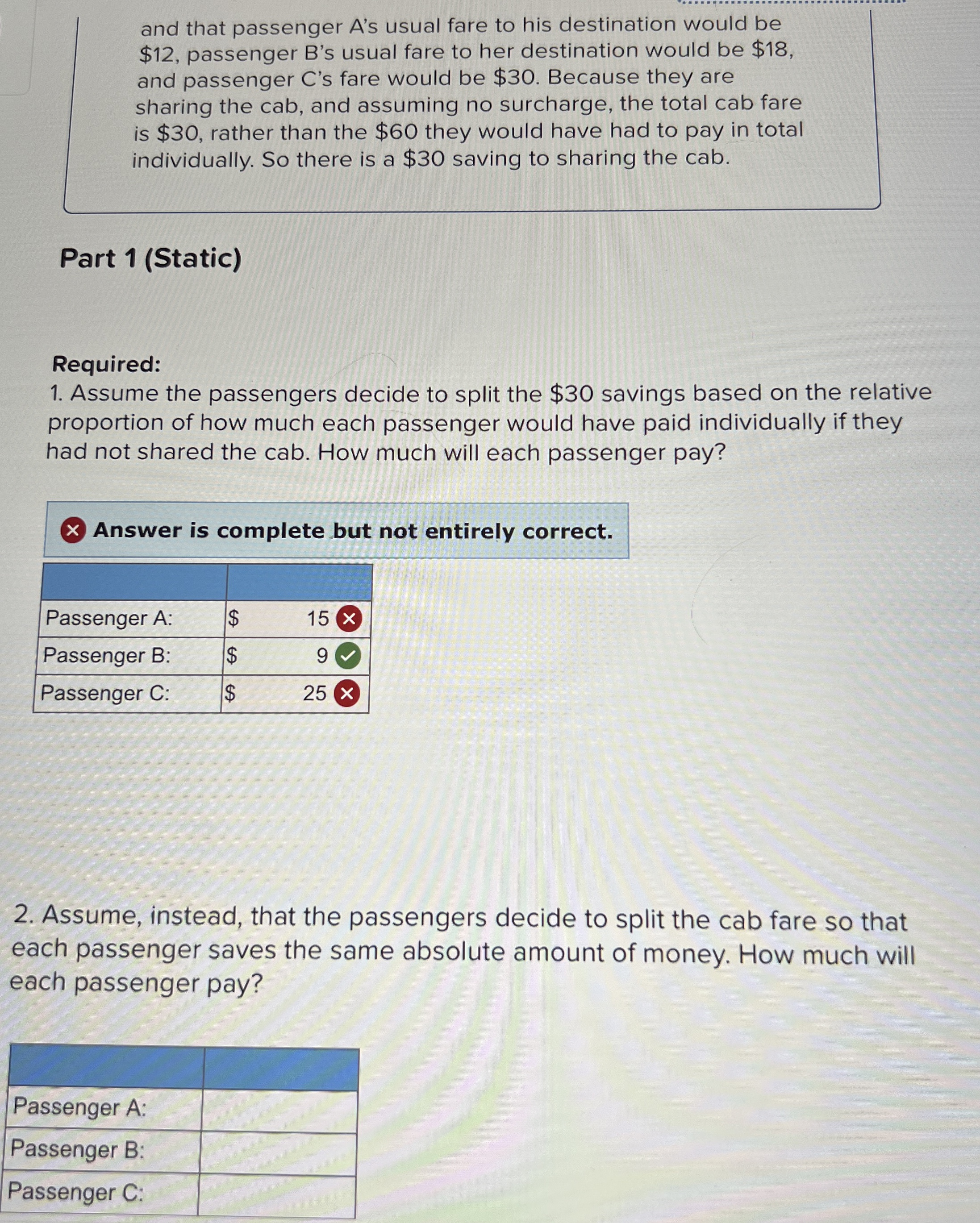Answered step by step
Verified Expert Solution
Question
1 Approved Answer
and that passenger A ' s usual fare to his destination would be $ 1 2 , passenger B ' s usual fare to her
and that passenger As usual fare to his destination would be $ passenger Bs usual fare to her destination would be $ and passenger Cs fare would be $ Because they are sharing the cab, and assuming no surcharge, the total cab fare is $ rather than the $ they would have had to pay in total individually. So there is a $ saving to sharing the cab.
Part Static
Required:
Assume the passengers decide to split the $ savings based on the relative proportion of how much each passenger would have paid individually if they had not shared the cab. How much will each passenger pay?
Answer is complete but not entirely correct.
tablePassenger A:$

Step by Step Solution
There are 3 Steps involved in it
Step: 1

Get Instant Access to Expert-Tailored Solutions
See step-by-step solutions with expert insights and AI powered tools for academic success
Step: 2

Step: 3

Ace Your Homework with AI
Get the answers you need in no time with our AI-driven, step-by-step assistance
Get Started


